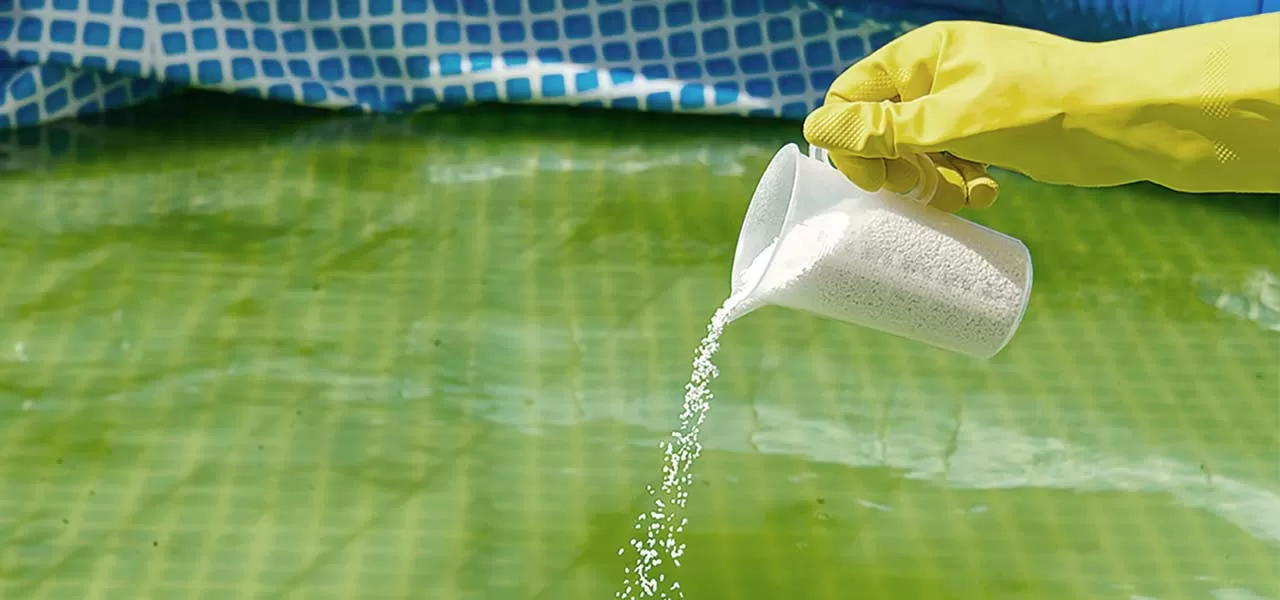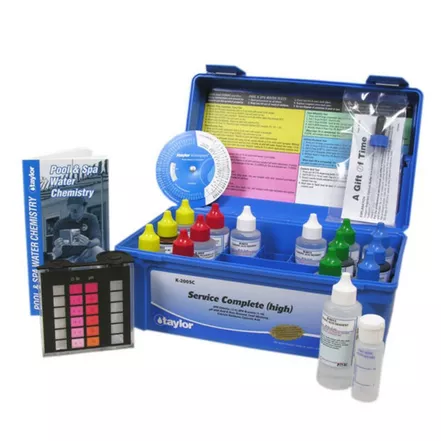FREE Standard Shipping On All Orders $100 or More!*

Shocking a Pool to Remove Algae
After what seems to have been an endless winter, the warm days can’t get here soon enough, and they’re finally right around the corner! And nothing can ruin your day faster than pulling back your pool cover to see a green, algae-filled pool. Hopefully this won’t happen to you this summer, but if it does, here’s what you’ll need to know about shocking your pool to remove algae.
First Steps to Clearing a Green Pool
Before you start pouring shock in the pool, the first step is to brush the sides and floor of your pool to loosen all the algae. Doing this breaks the skin and allows the pool shock to more easily kill the algae. Once you’ve done this, it is important to make sure you have the proper pH level in your water. The best pH level should be on the low side, between 7.2-7.4. A high pH level can prevent the chlorine shock from properly killing the algae. Be sure to test your pH before adjusting, with a fresh and reliable test strip or test kit.
In order to clear a pool suffering from a severe algae bloom, a chlorine level of about 30 ppm is preferable for optimal results. If you aren't dealing with a full blown algae bloom, levels of 10-20 ppm can be effective.
Shock the Pool:
The best way to administer shock into your pool is by pouring it into a bucket of water with at least a couple gallons of water. Mix it to dissolve, and pour the mixture around the perimeter of the pool. And remember — always add shock to water, never add water to shock!
Now it’s time to wait a while. Keep your pump and filter running. Give the shock a good 12 to 24 hours to work its magic. If the algae hasn’t cleared up after 24-48 hours, clean and brush the pool and add another shock treatment.
When the chlorine has completely finished working, the algae in the pool will turn a white/gray color and will either settle to the bottom of the pool or be suspended in the water. There shouldn’t be any more green color and the water visibility should be improving. Run the filter 24/7 and backwash as needed.
Clean the Pool:

When the water begins to clear, it’s time to vacuum your pool to get rid of all the dead algae. You can use a flocculant to settle suspended debris or a clarifier to aid in filtering. It is best to vacuum the dead algae to waste. You don’t want to trap all the dead algae in your filter. That can create a recurring algae problem.
Once the debris is gone from the water, it’s time to brush again with a new or good condition pool brush. Make sure there is no residual algae left on the walls or floor. Brush vigorously! If you feel the pain in your shoulders and arms, you're doing it right!
Clean the Filter:
After a thorough vacuuming and brushing, it is a good idea to clean your filter as well. If you have a DE or cartridge filter, remove the element and soak or spray with In The Swim Cartridge Filter Cleaner, and spray away all dirt and algae. Sand filters are a little more difficult to get clean. You can either replace the sand, or you can use a Sand Filter Cleaner. Natural Chemistry's Filter Perfect does a great job on any filter type, using natural enzymes and citric acids.
Test and Balance the Water Chemistry:

Test and adjust your pool to these levels: Free chlorine: 2.0–4.0 ppm, pH: 7.4–7.6, Total Alkalinity: 80–120 ppm, and Calcium Hardness: 200–400 ppm. Proper water balance in your pool is crucial to keeping clean water and staying algae free.
Any time your pool drops below 1 ppm of free chlorine, you are in the danger zone for algae (not to mention bacteria and viruses), especially if your pH and alkalinity levels are off, too. When your chlorine level is not high enough, it fails to kill off organic compounds that aid in algae growth.
Algae feeds off of phosphates found in plants and almost all other things in our environment. When phosphates enter the water with chlorine below 1 ppm, you’re almost sure to have an algae bloom. Sometimes it can even happen in a matter of hours!
How to Prevent Algae:

Prevent algae with good water balance and constant chlorination. There are a lot of maintenance products out there to help safeguard against algae and keep it from ever being an issue. For extra algae prevention, use weekly maintenance doses of algaecide and Natural Chemistry’s PhosFree to eliminate an algae food source.
Algae is a lot easier to prevent than to remove, but once you have it, brush the pool, lower your pH with a pH reducer, and then Super Shock the pool. Vacuum and brush again, and clean the filter — that's the most effective way to get your pool back to normal.